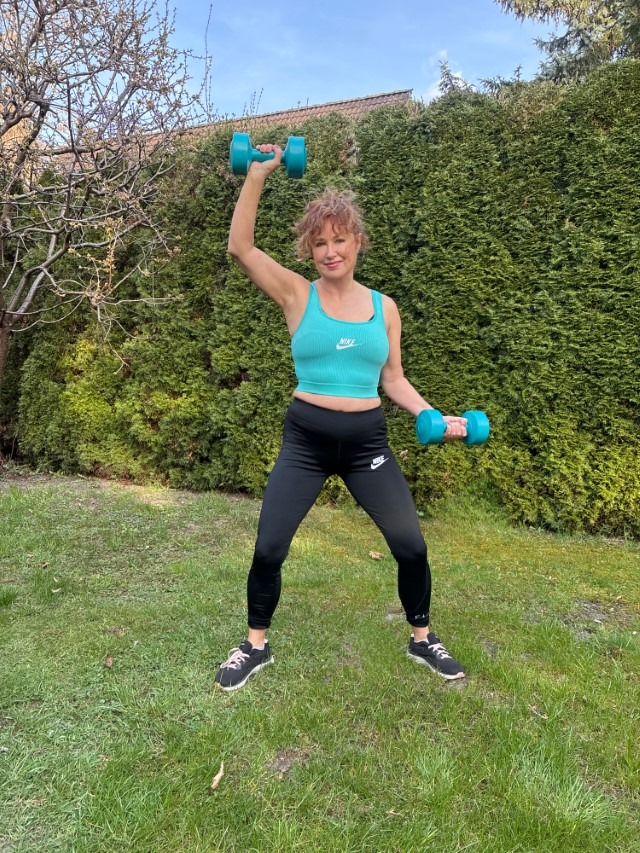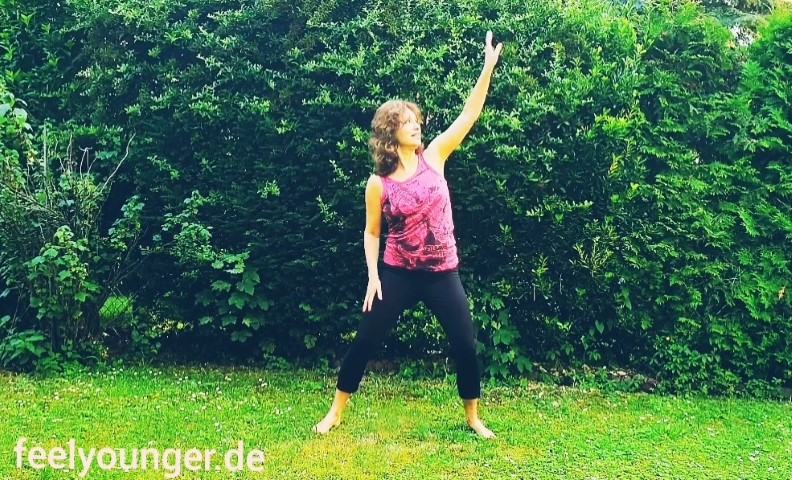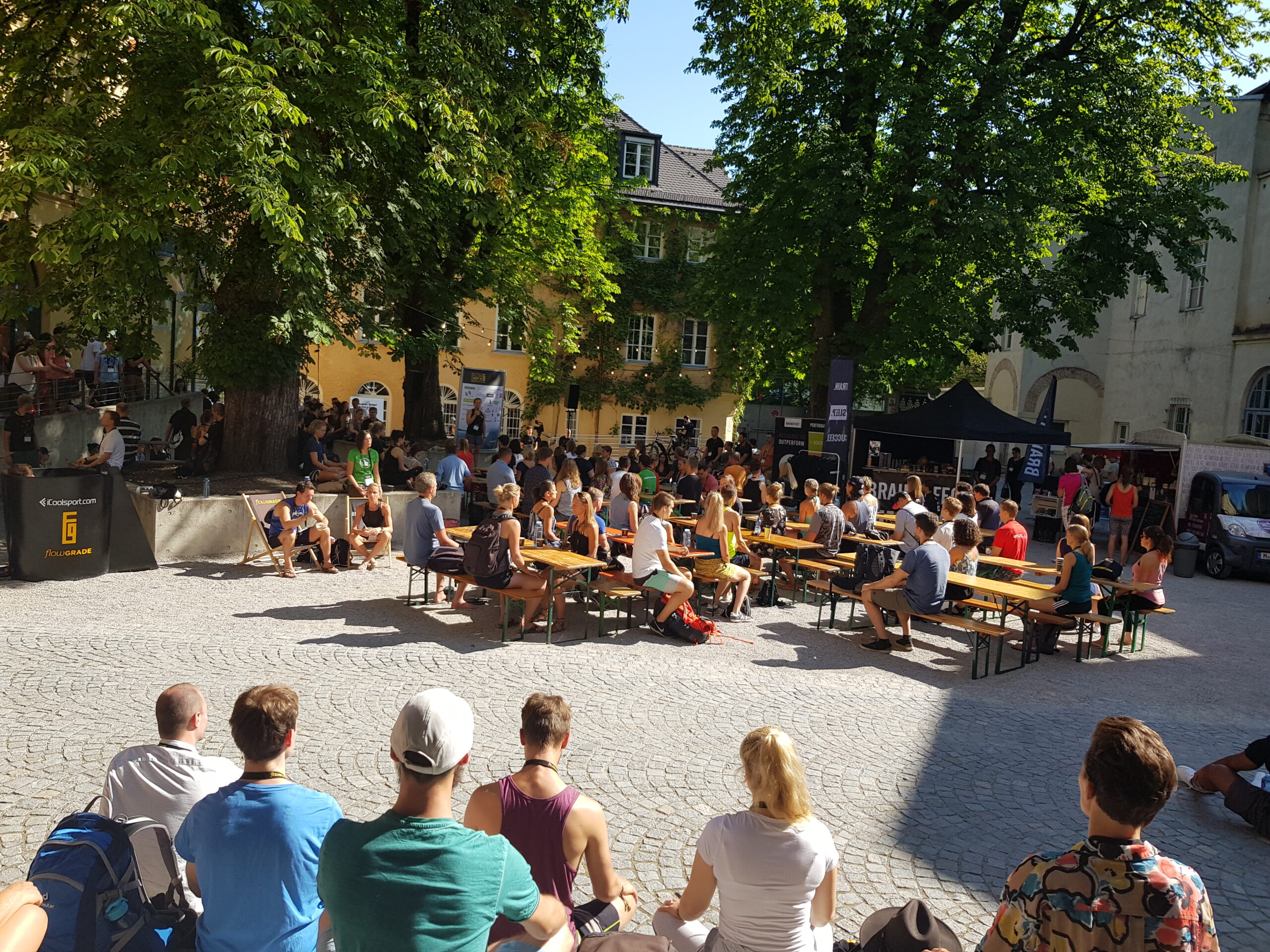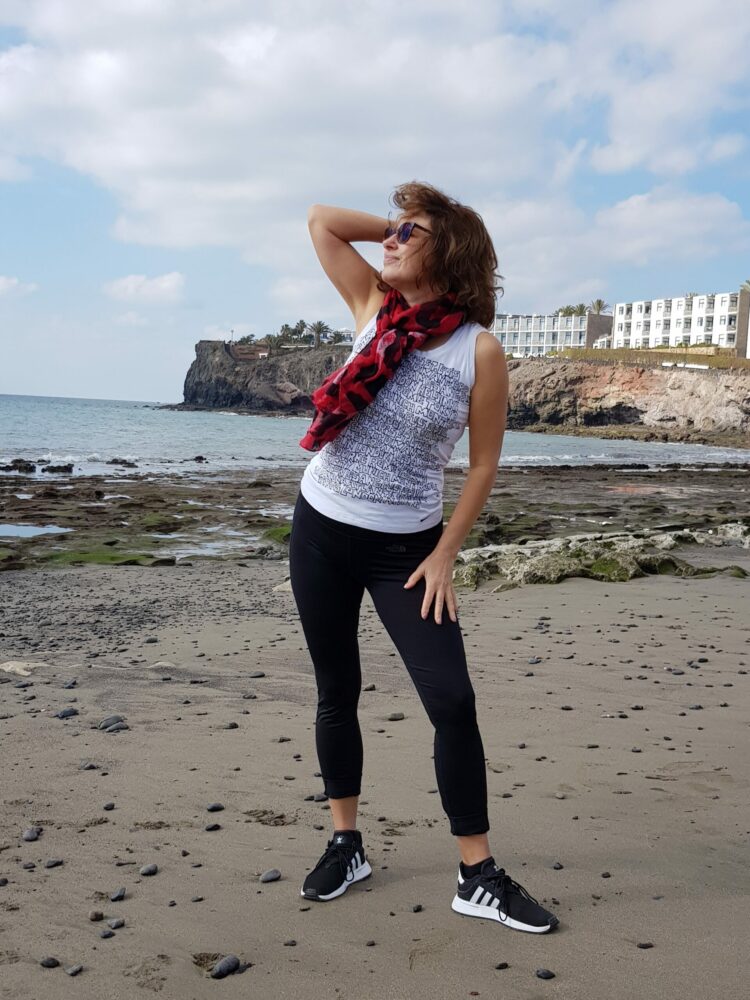Category: Fitness
My fitness tips and tricks to stay and to feel younger. You can lower your biological age, if you combine it with a healthy nutrition and good rest at night!
Happy Dancing Antiaging Work-out
Happy Dancing Antiaging Work-out barefoot on a green ground. Watch here how to stay fit and fexible without any equipment with dancing work outs! Click below on “read more” to watch a video!
Biohacking – optimize yourself!
Thanks to a tip, my interest in an extraordinary movement—still relatively new in the German-speaking world—was aroused. In July 2019 I followed up on that tip and attended the international biohacking conference, the “FlowFest 2019” in Munich.
During the conference, I familiarized myself with a range of topics and practices in the biohacking scene.
What is biohacking?
It refers to our individual power to increase our physical and mental potential—as well as that of the environment—in order to enhance well-being and performance.
On a beautiful sunny July morning, hundreds of cheerful, healthy-looking, multilingual people flocked to the courtyard of the old factory on Munich’s Prater Island. Their aim? To exchange ideas about new health trends and further increase awareness around issues related to body and mind.
The host was former high performance athlete Max Gotzler.
He is the founder of “FlowGrade” and one of the leading representatives of the biohacking movement. Conference participants spoke German, English, Dutch, and Finnish, along with other languages I couldn’t identify. There were various lectures and multiple workshops on offer.
The conference also brought together a number of outstanding speakers and guests. A sun-worshipping neurosurgeon from the United States, a scientist and keto nutrition advocate, and a self-made biohacker from the Netherlands. He climbs into a tub of ice water for 2 minutes every morning and doesn’t eat his first real meal until 2 p.m.
There was also a scary-looking bodybuilder who won over the audience by lovingly demonstrating stretching exercises to relieve back pain.
Equipment vendors and various representatives for a range of nutritional supplements were also part of the festivities.
I was especially impressed with a red light lamp that supposedly has miraculous biohacking effects beyond heating. Vitamins, magic-powder concoctions, special mattress covers, and magnetic field-zapping devices were naturally part of the offerings, too.
Completing the picture were numerous books about advanced forms of exercise and sports equipment. During lunch, there were only organic and natural lemonades to drink, of course.
Despite feeling slightly critical, I still learned a lot and took away plenty of lessons from the conference!
Here are my everyday biohacking tips for everyone:
- Every morning after waking up, a yoga sun salutation, followed by a 30-second cold shower
- A 10-minute walk before breakfast, if possible
- 1 hour of exercise 3 times per week: ¾ cardio and ¼ strength training
- After exercise, 400mg magnesium plus calcium in the form of a sports drink
- As often as possible, choose only steamed vegetables or salads as side dishes for a protein source
- Spend 20 minutes in the sun every day, even when it’s cloudy
- Avoid elevators whenever possible
- Meditate for 10 minutes before going to sleep
Violà.
Share this post
LOSE WEIGHT THE RIGHT WAY!
“Weight loss” is a powerful term that leads many people to believe they’re carrying around “more than they need.”
Being at a lower body weight means being in good health, looking good, and enjoying a higher quality of life. Which is partly true. Inevitably, when we’re thinking about weight loss, the first thought that comes to mind is: which diet is best? That is, which diet is the fastest way to melt away those cushions of fat?
The answers to this question—in the form of dietary suggestions and tools—are all over the media, in pharmacies, and on the market. This helps generate big sales in the diet and wellness industries.
In my opinion, however, no diet on its own is capable of helping us lose weight!
Besides that, women in particular need a certain amount of body fat to stay healthy. My post Love your fat cushions! has more information about this idea.
Instead of starting with diet, we want to approach weight loss from the other end. In other words, we want to ask ourselves:
“What do I do?” instead of “What do I eat?”
First and foremost, when it comes to weight loss, we have to give up our “I’m feeling lazy” diet! Why? One of the best ways to decrease body fat is to increase muscle mass through exercise and sports.
Even when we’re at rest, our muscles burn energy. In other words, our muscles are the best natural weight-loss remedy that comes from within.
But this doesn’t mean that exercising gives you permission to pig out. There are still a few rules to follow here. Still, there’s nothing wrong with indulging yourself now and then. In fact, it’s a good idea to do it occasionally. Why? Giving yourself permission to splurge contributes to feelings of inner satisfaction—and to your long-term success!
Here’s my strategy for successful, long-term weight loss:
- 3 times/week: 1 hour of exercise (45 minutes of cardio and 15 minutes of strength training)
- 2 times/week: 20 minutes of stretching and/or yoga
- 1 time/week: 15-30 minutes of dancing
- 1 time/week: Rest
Nutrition: not so many carbs, lots of protein, fresh vegetables, 2-3 liters of sugar-free/alcohol-free fluids per day
Voilà.
Please write a comment below and share this post on social media! Your e-mail adress w’ont be published.
BioAge – How you can lower your Biological Age
Have you ever woken up and wondered why you don’t jump out of bed and feel ready to tackle the day’s challenges with energy and vitality, like you did when you were young? Do you have the nagging feeling that, in the second half of your life, things suddenly take more time than they used to? Is this something you should feel depressed about?Absolutely not. But the Answer is: Biological Age!
As the saying goes, “You’re only as old as you feel.”
Ultimately, feeling younger comes down to simply changing a few things—especially the things that don’t make you feel good—on both: physical and mental level.
Physical and mental health, as you know, are mutually dependent. Your physical health is the basis for everything: if you’re not feeling good in your body, then you’re limiting your ability to use your mind in the most effective way. Read: Bio-Age the mental side
Let’s start on the physical level. There’s no reason to feel resigned about getting older. Science offers us both comfort and hope. So does nature. How so? By focusing on your “biological age,” or BA for short, which can vary up to 10 years (plus or minus) from your chronological age. Do you know your own BA?
There are 3 ways to categorize your BA:
Your’re
- older than your chronological age, or your age in calendar years
- the same age as your chronological age
- younger than your chronological age
Which of these options appeals to you most? Feeling older than, or the same age as, your chronological age doesn’t involve any effort. Meanwhile, feeling younger than your chronological age is something you actually have to work toward. At first, lowering your BA might seem like a challenge. But believe me, it’s not difficult—and on top of that, making an effort to feel younger can actually be fun. The first step is to determine your biological age. There are a variety of institutions, mostly university clinics, where you can have your biological age measured.
No matter what your biological age is now, the important thing to remember is that you have the power to change it. It largely depends on the condition of your blood vessels and musculoskeletal system. So how do you go about lowering your biological age? It’s actually very simple. It involves paying attention to
Three main aspects of your lifestyle:
- Fitness
- Nutrition
- Relaxation
The first two are clear. The third category includes things like getting enough sleep, losing yourself in activities you love, and sex. I’d like to (briefly) take a closer look at these three areas of our lives.
Fitness
Do you have to buy a bunch of exercise equipment and join a gym to stay in shape? Not necessarily. If you’re already athletic, I don’t need to tell you what to do. At any rate, as you get older, you’ll be forced to slow down eventually. For those of you who work out little or not at all, however, it’s important to keep in mind that your body needs to be in motion every day. Doing sports is a way to go beyond your body’s daily need for movement. The key is to find a middle way that works for you. With that in mind, you want to seek out activities that make you sweat, at least a little.
The ideal formula looks like this: 1 hour of sweat-inducing exercise 3 times a week. It doesn’t matter which activity you choose. The best exercise is the one you like the most—not including sex. We’ll get to sex later. What form of exercise do you like best? For me, it’s dancing. I’ve been a member of a dancing club for five years, and I find that dancing totally energizes me, both physically and emotionally. But you don’t have to be a member of a dance team to do it; dancing is nothing more than moving in time to music. It can be as simple as putting on your favorite songs and moving “freestyle.” Every day for 10 to 15 minutes in your living room. That’s it.
You can also supplement your exercise routine by doing things like skipping the elevator and taking the stairs, and walking whenever possible.
Diet/Nutrition
Do you think you need a diet plan that includes exact calorie counts and recommended daily allowances? Does everything have to be organic? Is going vegan the best alternative? Not necessarily.
Simple principles apply here, too: about 3 meals a day, more vegetables than fruit, more raw than cooked, more whole grains than refined flour, and more fish than meat. And always eat until you’re satisfied. Organic products are definitely preferable, but eating organic doesn’t have to be a religion.
Drink a lot of water, and avoid fruit juices or too much alcohol, which the body converts into sugar.
Relaxation
Sitting in the sun and daydreaming? It’s a great idea, but you don’t always have the time or the chance, do you? Each of us has different opportunities to relax, along with different ways of doing it.
For me, for example, “clothing management” is extremely relaxing. I love rummaging through my wardrobe and deciding whether my clothes are still up to date and attractive.
How do you know if you’re doing something that relaxes you? First of all, it happens naturally. When you’re truly relaxed, you’re in a “flow” state. It’s easy to forget about whatever problems you might be dealing with, like when you’re lounging around in bed and daydreaming about something you might want to learn, instead of obsessing about what might go wrong with your next project. In any case, resting for about eight hours every night is also an indispensable part of lowering your biological age.
And what about sex? I consider sex to be another important factor that affects your biological age.
To be continued.
Your Ninelle M.
Please write your comment below and share this post. Your e-mail address won’t be published!





